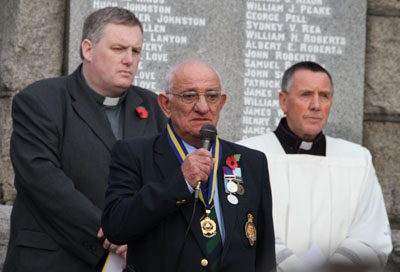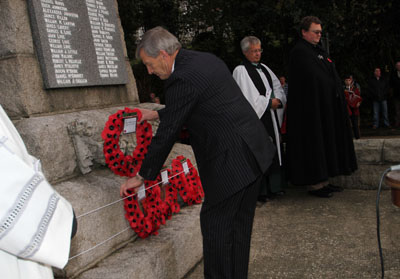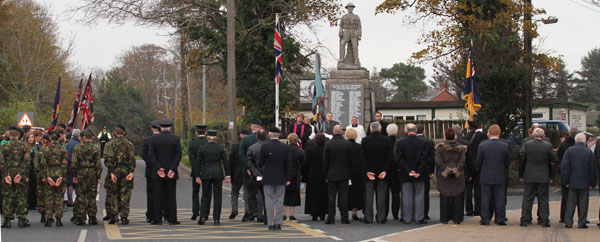REMEMBRANCE Sunday is always a solemn time as we remember the fallen of two world wars and other conflicts. Again this year celebrations took place across Europe and in Northern Ireland and across County Down.
The relevance of recognising the poppy as a symbol of love, peace, hope and tragedy is something that has touched the hearts of many across national boundaries. It has become a potent symbol, but one not without its controversy.

In Ireland, opinions are divided about the poppy’s relevance, and in 1997 the then new president elect Mary McAleese upset the Unionist community in the North when she refused to wear the poppy at a Rembrance Day celebration. There are still many who feel strongly about the British army that Irishmen died in on the battle fields of France and Belgium and that army was later moved to Ireland during the troubled times following the 1916 rebellion and the drive for Irish independence.
We are now four years away from the centenary of the Irish Rising in 1916 and just two years away from the centenary of the start of the First World War in 1914. As attention focuses on these huge historic events, attention will no doubt turn on the poppy, and the arguments may continue. The Royal British Legion sees the poppy as a means to promote the welfare of those service people who have suffered in conflicts and their families, and remember the fallen as opposed to the view that it is a British-colonial establishment symbol which some Irish nationalist camps are uncomfortable with.
Broadcaster John Snow described the call for the red poppy to be worn universally as ‘poppy fascism’. And BBC Northern Ireland presenter Donna Traynor refused to wear a poppy on a live show and was withdrawn from air-time until the issue was resolved.
CHECK OUT THE SELECTION OF PHOTOS ON FACEBBOOK
So how did the celebration of the poppy come about?

After one of the bloodiest battles of World War I, in the fields of Flanders in western Europe, when the ground was completely churned up, thousands of red poppies sprang up from the mud.
The seeds that had lain dormant in the soil grew up after being exposed to the air with the churning of the earth from explosions, the soldiers’ boots and digging of trenches. The soil was heavily fertilised with their blood and bodies, and poppies grew abundantly on land where other plants would not grow.
Also in 1915, poppies were immortalised in the well known war poem, In Flanders Fields, written by John McCrae. This poem is spoken at memorial services everywhere on Remembrance Day and Anzac Day.
During the early days of the Second Battle of Ypres a young Canadian artillery officer, Lieutenant Alexis Helmer, was killed on 2 May 1915 in the gun positions. An exploding German shell landed near him. He was serving in the same Canadian artillery unit as a friend of his, Canadian military doctor Major John McCrae also artillery commander.
John McCrae was asked to conduct the burial service for Alexis because the chaplain was absent. After the burial, John McCrae put pen to paper and wrote the famous poem ‘In Flanders Fields’. From then on, the popularity of the poppy as a lasting symbol of the fallen had been sealed.
In Flanders Fields
In Flanders fields the poppies blow

Between the crosses, row on row,
That mark our place; and in the sky
The larks, still bravely singing, fly
Scarce heard amid the guns below.
We are the Dead. Short days ago
We lived, felt dawn, saw sunset glow,
Loved and were loved, and now we lie
In Flanders fields.
Take up our quarrel with the foe:
To you from failing hands we throw
The torch; be yours to hold it high.
If ye break faith with us who die
We shall not sleep, though poppies grow
In Flanders fields.


























